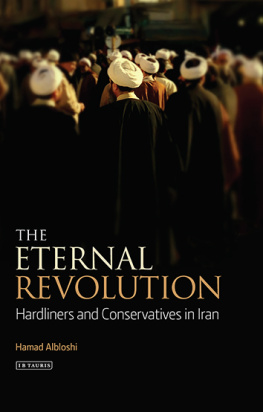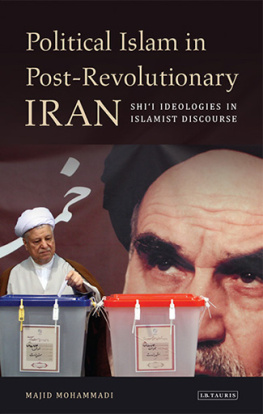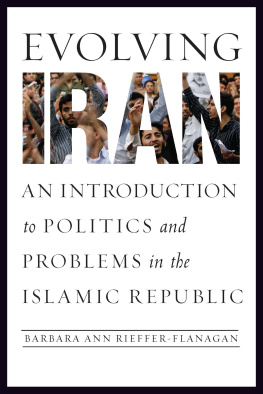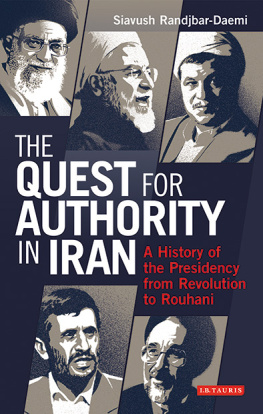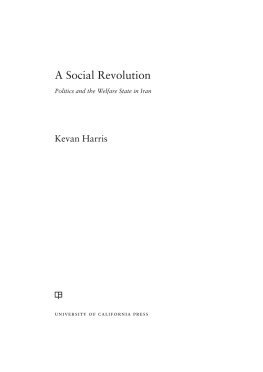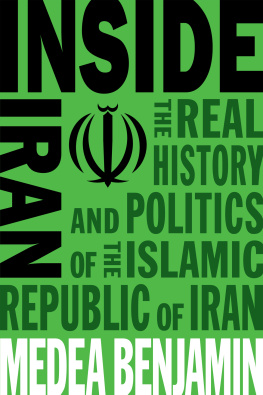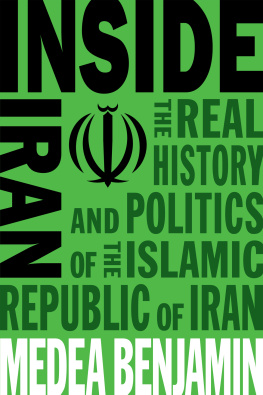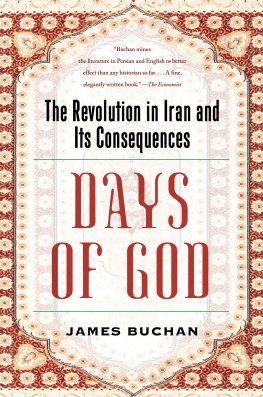Hamad H. Albloshi is Assistant Professor in the Political Science Department at Kuwait University. He is an expert in Iranian history and politics. He holds a PhD in International Relations from the Fletcher School of Law and Diplomacy at Tufts University.
Hamad Albloshi's analysis of the political debates between the conservatives and the reformers in Iran is a major step forward in understanding the unique character of the Iranian Revolution: rather than being a version of the modern European national revolution done in a secular fashion, the Iranian state and society that emerged in 19789 definitely had a religious framework that separated it from most of the modern state foundations in the twentieth century. Dr Albloshi's emphasis on the Iranian cultural setting for the development of political power in Iran after 1989 is a much-needed shift away from analyses of the Iranian failure to follow institutional patterns suitable to modern political and economic development in the European sense. Albloshi has made a major contribution.
Andrew C. Hess, Professor of Diplomacy, Director of the Southwest-Central Asia and Islamic Civilization Programme, Tufts University
This is a work that relates theory with history and current politics. Hamad Albloshi has done significant research for this book, which reflects cultural sensitivities and a Middle East perspective. It is timely in light of progress on nuclear negotiations.
Vali Nasr, Dean and Professor of International Politics, Paul H. Nitze School of Advanced International Studies, Johns Hopkins University
THE ETERNAL
REVOLUTION
Hardliners and Conservatives in Iran
H AMAD H. A LBLOSHI
Published in 2016 by
I.B.Tauris & Co. Ltd
London New York
www.ibtauris.com
Copyright 2016 Hamad H. Albloshi
The right of Hamad H. Albloshi to be identified as the author of this work has been asserted by the author in accordance with the Copyright, Designs and Patents Act 1988.
All rights reserved. Except for brief quotations in a review, this book, or any part thereof, may not be reproduced, stored in or introduced into a retrieval system, or transmitted, in any form or by any means, electronic, mechanical, photocopying, recording or otherwise, without the prior written permission of the publisher.
Every attempt has been made to gain permission for the use of the images in this book. Any omissions will be rectified in future editions.
References to websites were correct at the time of writing.
International Library of Iranian Studies 60
ISBN: 978 1 78453 542 1
eISBN: 978 0 85772 950 7
ePDF: 978 0 85772 747 3
A full CIP record for this book is available from the British Library
A full CIP record is available from the Library of Congress
Library of Congress Catalog Card Number: available
For:
My parents, Hameed and Zuhrih
My wife, Elham (Rabo)
My daughter, Kawthar
LIST OF FIGURES
The indirect relationship between Mib Yazd and Isfandyr Ram Mash.
Comparison between the Reformists and Mash in Y Lithrt weekly newspaper.
A poster designed by the adherents of the supreme leader says, We Are Not the People of Kufa, to Leave Ali Alone.
Fakha News website and the supreme leader.
A comparison between two newspapers content on the reformists and religious intellectuals.
A computer mouse instead of a grenade. Taken from 9 Diy.
Four weekly newspapers and their coverage of the issue of the martyrs in the last or front pages.
Unemployment rates according to the Central Bank of Iran.
ub-i Dukhih's coverage of the issue of the Mahdi and the End of the World.
A picture that was shown in the documentary and depicted Ayatollah Khamenei as Sayyid Khursn.
A photo in Y Lithrt referring to the supreme leader as the Khursn.
The relationship between the main issues that appear in the discourse of the hardline conservatives.
PREFACE
The idea for this book came in 2011 while watching a documentary with my wife about the reappearance of the Mahdi, the Shii Twelfth Imam. In the documentary, as this book will show, different ideas were discussed and different figures were looked at. However, the most important issue was how the producer tried to link the current Iranian supreme leader, Ali Khamenei, and the former president, Ahmadinejad, to the reappearance of the Mahdi.
Coming from a Shii background, I know how sensitive the issue of the Mahdi is, and how people have been impatiently waiting for him or for any sign telling them of the end of his occultation. Many people in Shii history have appeared and claimed that they have been in contact with him, or that certain events and people can predict his reappearance. The documentary, Ahmadinejad, and many extreme statements made by people within the Iranian regime made me ask and attempt to answer the following questions: Who are these people? Where do they come from? How do they think and what do they want?
In order to complete this book, I visited Iran several times. I had the chance to meet ordinary people, but not officials. Even though I was not given permission to do research in the country, I was able to find many books, newspapers and magazines, as well as documentaries and recorded lectures. These visits were also important because I was able to feel the existence of the conservatives' ideology in the Islamic Republic. The group, as this book will reveal, focuses on different issues such as martyrdom, the absolute role of the supreme leader, economic justice, and the relationship to the outside world, in addition to its focus on the Mahdi. The influence of these issues is seen in the country. For example, when entering various cities in Iran, you can feel the presence of the martyrs through their names and portraits in many places and streets. Pictures of the supreme leader are seen in different locations, staring at people. Slogans against the US and the enemies of the Islamic Republic are repeated in Friday sermons and pro-government demonstrations, and they are also displayed on pictures, banners, and statues around the country. Slogans are everywhere, giving the impression that Iran is a country of slogans.
This is not the only picture of Iran. This image is given by the rulers of the country and their supporters but there are certainly other opinions of all the above-mentioned issues, as other factions within the ruling elite have different demands. Therefore, Iran is not only about the hardline conservatives: there are people who are eager for more social freedom; there are people who appreciate arts, music and freedom of expression; and there are Iranians who view Western culture and countries positively. Many of these people are also supporters of the system, but they have a different perspective. However, it is important to analyse the ideological foundations of the hardline conservatives because they have the upper hand within the regime and they dominate many important institutions in the country.
ACKNOWLEDGEMENTS
It is hard to mention all those people who have supported me during the process of writing this book. However, there are certain people who deserve a special note of thanks.
Professor Andrew C. Hess, my academic advisor for six years at the Fletcher School of Law and Diplomacy, Tufts University, has been a great supporter and a great source of inspiration all those years. I am indebted to him for the energy he put towards the completion of this project as well as my graduate studies at the Fletcher School. I have to thank Vali Nasr, Dean of the John Hopkins School of Advanced International Studies and Professor Ali Gheissari of the University of San Diego, for their insight, thoughtful advice, time, effort and generous support for this project from the beginning. Their deep understanding of the topic has shaped this book and deepened my views on Iran, its internal politics and its cultural heritage.

